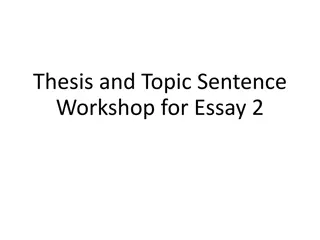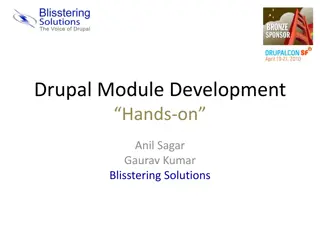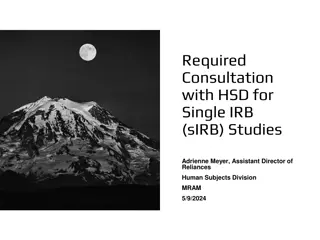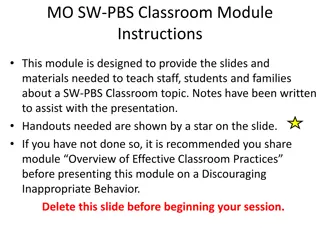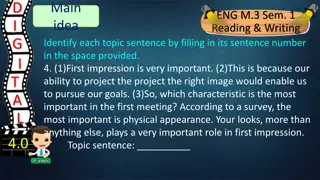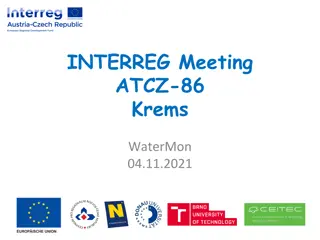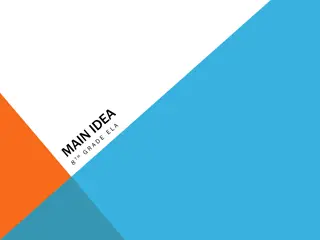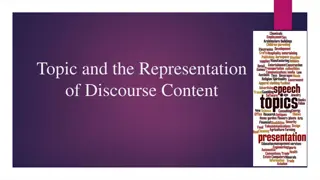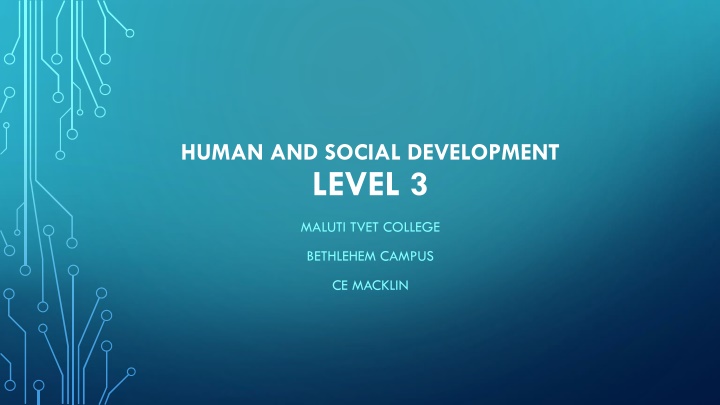
Key Strategies for Inclusive Education and Development
Explore barriers, provisions for learners with HIV/AIDS, societal and pedagogy barriers, intrinsic disabilities, and more in human and social development level 3 at Maluti TVET College. Learn about strategies for improvement, inclusion, and advocacy in education.
Download Presentation

Please find below an Image/Link to download the presentation.
The content on the website is provided AS IS for your information and personal use only. It may not be sold, licensed, or shared on other websites without obtaining consent from the author. If you encounter any issues during the download, it is possible that the publisher has removed the file from their server.
You are allowed to download the files provided on this website for personal or commercial use, subject to the condition that they are used lawfully. All files are the property of their respective owners.
The content on the website is provided AS IS for your information and personal use only. It may not be sold, licensed, or shared on other websites without obtaining consent from the author.
E N D
Presentation Transcript
HUMAN AND SOCIAL DEVELOPMENT LEVEL 3 MALUTI TVET COLLEGE BETHLEHEM CAMPUS CE MACKLIN
HUMAN AND SOCIAL DEVELOPMENT LEVEL 3 TOPIC 2 CRITICAL ELEMENTS OF HUMAN DEVELOPMENT MODULE 2 BARRIERS TO DEVELOPMENT AND PARTICIPATION AS A CONSEQUENCE OF SPECIAL NEEDS
WHITE PAPER LAY OUT SIX KEY STRATEGIES. The improvement of special schools. The inclusion of all disabled youth and children. Creation of more full-service places of education. Orientation and introduction Establishment of district support teams The implementation of a national advocacy and information programme.
PROVISIONS RELATED TO HIV AND AIDS Learners and students living with HIV should lead as full a life as possible and should not be denied the opportunity to receive an education to the maximum of their ability. No learner can be denied admission to a school because of his or her HIV status. No learner or student may be denied admission to or continued attendance at school Learners living with HIV have the right to attend any school or institution. Learners living with HIV are expected to attend classes in accordance with statutory requirements for as long as they are able to do so.
EXTRINSIC BARRIERS SOCIETAL BARRIERS those that are found in the learner s community or society. Severer poverty Late enrolment Child-headed households Street children HIV and AIDS PEDAGOGY BARRIERS related to teaching and assessment. Inappropriate teaching methods Inappropriate learning and teaching materials Inappropriate assessment procedures Inadequate facilities at schools and overcrowded classrooms Lack of basic and appropriate learning materials and a lack of assistive devices. Safety Policy and curriculum issues. SYSTEMATIC BARRIES systems in which learners operate.
2.3 INTRINSIC DISABILITY DISABILITY: condition of being unable to perform as a consequence of physical or mental incapacity. LEARNING DISORDERS: Disorder found in children of normal intelligence who have difficulties in learning specific skills. Reading disorders Writing disorder Maths disorder CHRONIC HEALTH PROBLEMS PSYCHOLOGICAL PROBLEMS.










